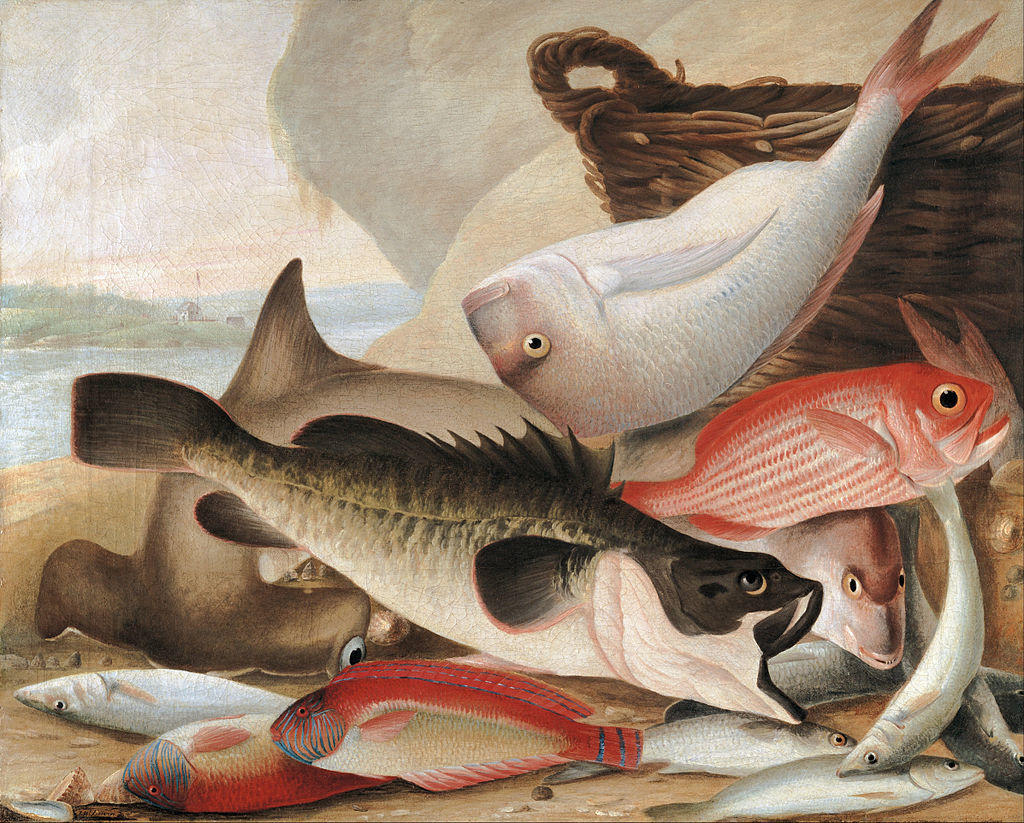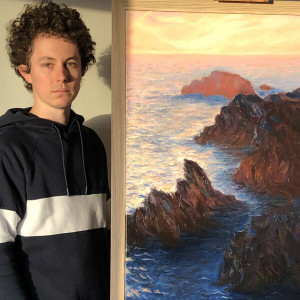The first colonists came ashore in 1788, 182 years after Europeans first found the continent, in the area that had been named Sydney, in the land claimed by Britain as New South Wales.
Naturally, art came with them! While it wasn’t at the forefront of everyone’s concerns as they began making a home in a new land, there were artistically inclined people and trade artists in the new Australian settlements.
Their works help us understand what life was like back in those days, and we can see the groundwork laid for the future of art in Australia from those moments on, leading up to the present day.
Here, we will explore the history and importance of colonial art Australia.

How Colonial Art in Australia Began
The first Australian colonists voyaged from Britain to Sydney Cove in 1788. Some of the colonists were prisoners who were given the opportunity to clear their debts by helping Britain create settlements in Terra Australis, but many of the people were simply those who wanted an opportunity to create a new life.

At first, those who settled in Sydney and the region known as the Illawarra were more practically minded, and art was used as a way of documenting history. Early artists faced an interesting challenge: depict an unfamiliar land so unlike Europe that it looked bizarre to those who had never seen the land before. Additionally, the art was met with scepticism since it depicted things like the platypus, which seemed like an impossible animal to those who saw only the drawings.
Many of these colonial artists were interested in keeping a record of what they saw in the new colony. They documented things like the landscape, flora, and fauna, as well as Indigenous peoples.
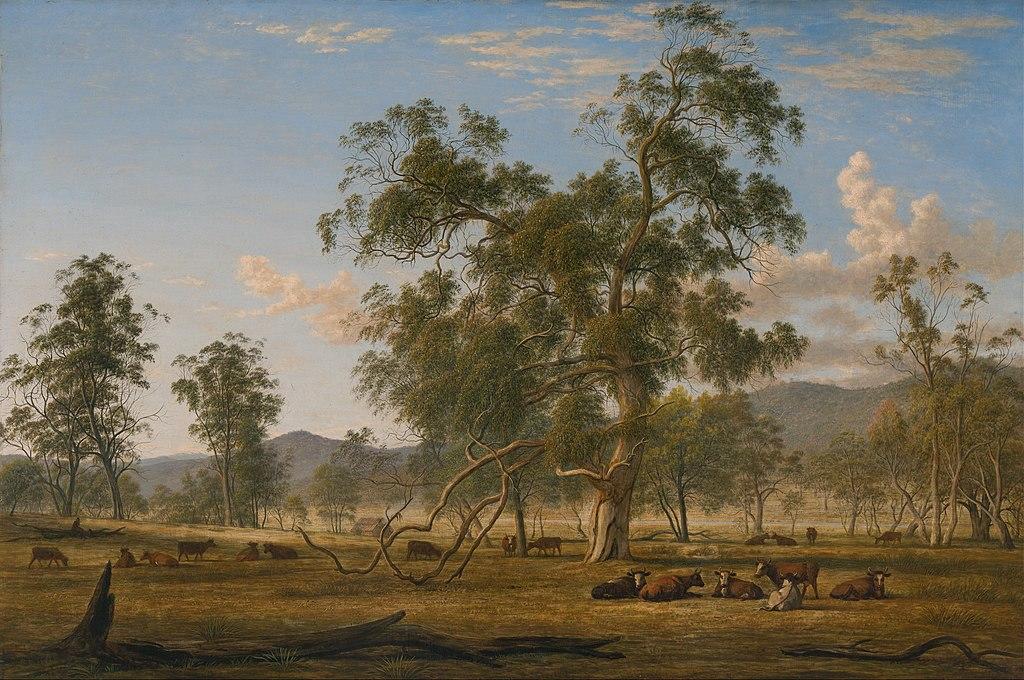
John Lewin and John Glover were both renowned artists in Australia at this time. Glover was among the first of the artists to accurately capture the likeness of the Australian landscape. Lewin’s most well-known painting is of the Platypus (1808), a painting which is still celebrated today as being one of the most influential artworks from early colonial times.
The Cultural Implications of Colonial Art
Colonial art in Australia, like all art, quickly began to have a deeper meaning than just documentation. It was how the new arrivals could feel a sense of understanding in the strange new land.
After the basic understanding, it became a way for colonists and Britain to feel a sense of ownership over the land. After all, once the landscape and the flora and fauna could be understood and their likeness captured on canvas, it made it all seem less foreign and intimidating and gave the settlers more confidence.
Early colonial art served as a stepping stone for Brits and the soon-to-be-Aussies to feel more at home in New South Wales and eventually more areas across the continent.
What Kinds of Art Did Colonists Make?
At first, colonists focused mainly on creating realistic, scientific illustrations of the plants and animals in the new land as well as landscape paintings and some portraiture.
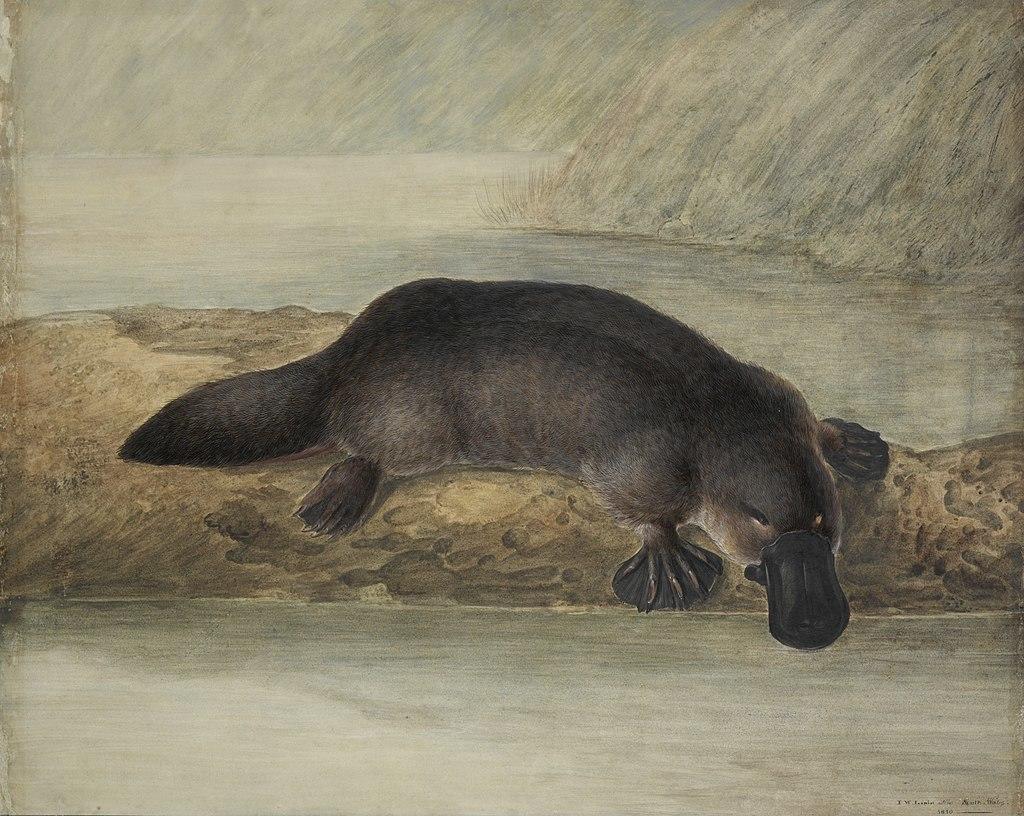
The artists at this time mostly worked in watercolour or sketches, since those were the most affordable mediums and were the easiest to transport. Also, since many of the artists were amateurs, it was rare for a European painter in Australia to have enough knowledge and practice with other mediums to warrant the cost of buying things like oil paints.
As time passed, more artistically minded people made their way to the colonies with ambitions of capturing the likeness of a new land for pleasure and profit. Landscapes became a central theme among Australian colonial paintings and artists like John Glover sought to capture idyllic views of the rugged Australian scenery in a way that appealed to the European eye.
These types of paintings acted as a sort of soft propaganda, showing that the settlers were growing their command over the wilderness and making the area seem more inviting and suitable for more Brits to come ashore.
In the mid-19th century, the gold rush and economic prosperity helped usher in a new era of art, which was more romantic. Louis Buvelot is credited with introducing a naturalistic approach to landscape painting, highlighting scenic views of settled land over the wild ruggedness in previous motifs.
Over time, art began to depict more of colonial life, such as labour and farming scenes, domestic life, and Indigenous Australians. While the artwork provides important insight into daily life and societal thinking at the time, it also shows how everything was viewed through a skewed, Euro-centric lens. Often, scenes depicting Indigenous peoples were misleading or misrepresentative, even showing fictitious, romanticised scenes over truth.
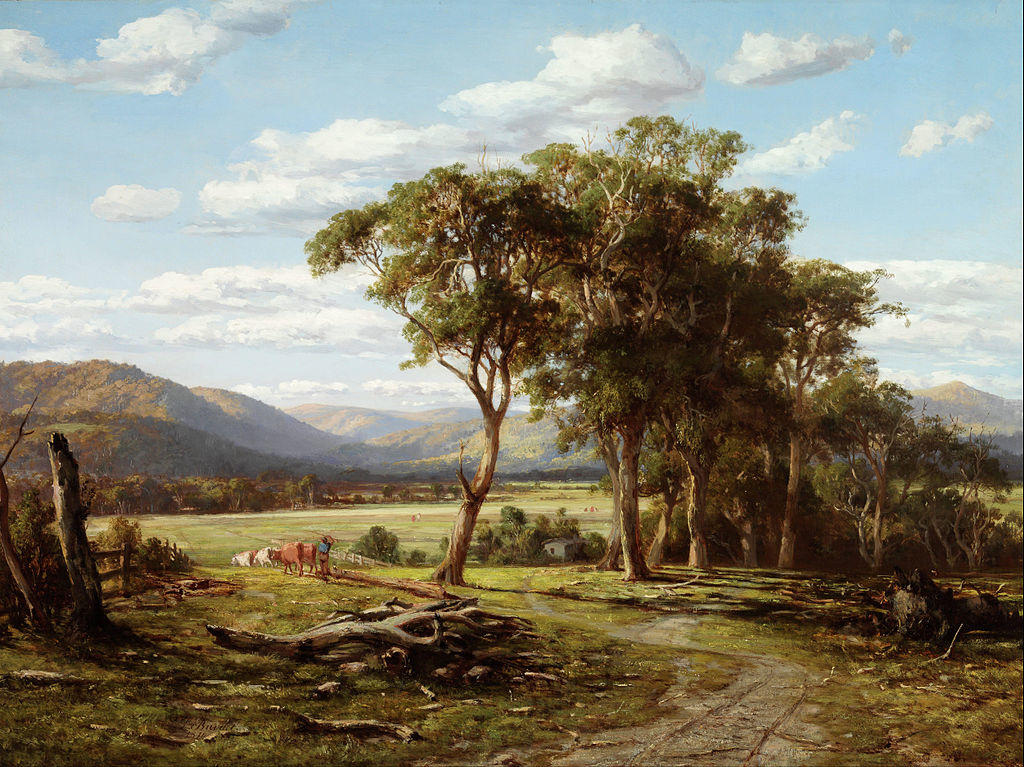
It wasn’t until this time that more professional artists began making their way down under. But, instead of oil paintings, many were interested in creating litographs and etchings, since they were more suitable for mass reproduction and sales; the artists mostly wanted to create sellable art and make money.
Famous Australian Colonial Art and Artists
Even though colonial Australian art was not groundbreaking in the sense that it was a new, exciting, unique art movement, it was notable because it portrayed never-before-depicted landscapes, plants, and animals (in Europe).
Settlers and people back in Britain alike were very excited to learn more about the land and see the exotic scenes. Those in Britain looked forward to the sketches and paintings brought back which showed these new scenes and wild flora and fauna. There were so many things in Australia that Europeans had never even dreamed of!
In this time period, there were several notable artists whose lasting legacy helps us understand how settlers made sense of their place in the land at the time.
Sydney Parkinson (1745-1771)
While not quite a colonist painter, Parkinson must be acknowledged as a pivotal artistic figure in Australian history. He travelled with Captain Cook in 1768 on the first voyage to South America, Tahiti, New Zealand and Australia.
As the first European artist to set foot in Australia, he created about 1000 drawings and watercolour paintings (primarily botanical and of animals) on this trip. Sadly, he passed away at sea shortly after leaving Australia due to dysentery.
His drawings were the first of their kind, shedding the first light on the kinds of plants and animals, as well as the people, that could be found in the novel continent.

John Glover (1767-1849)
Glover emigrated to Australia in 1831 and quickly began working on capturing the Tasmanian landscape. He was one of the first artists to utilise a more romantic style rather than scientific, giving a better overall depiction of the emotions of the land via the use of light and atmosphere, rather than a detached scientific illustration.
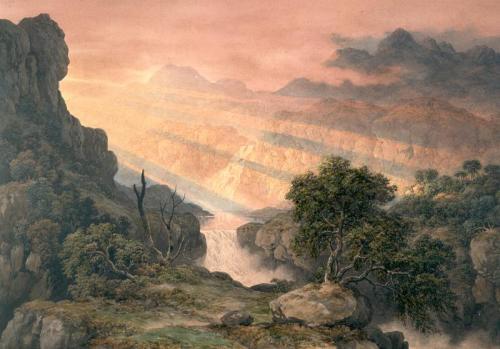
He combined European artistic traditions with the exotic wild beauty of Australia to create works like Patterdale Landscape with Aborigines. In fact, many of his landscapes included depictions of Aboriginal peoples, however, he often portrayed them in a romanticised light rather than authentic or factual.
Regardless, he is regarded as the “father of Australian landscape painting” and deeply influenced colonial Australia’s cultural identity.
John Lewin (1770–1819)
The very first professional artist to settle in Australia, Lewin arrived to Sydney in 1800. His art was a combination of scientific documentation and fine art, with one of the best examples being Platypus (1808). The detailed depiction of this strange animal perplexed people all over the world (except, of course, Indigenous peoples already familiar with the animal!) who thought it was surely a mythical creature.
His other major publications, such as Birds of New South Wales, are some of the most complete works of the time detailing Australian natural history. Lewin’s works also help shed light on what settler-Aboriginal relationships were like at the time and how they progressed.
Augustus Earle (1793-1838)
Earle was probably the first freelance, professionally-trained travelling artist in the world. In his travels, he visited and painted in the Mediterranean, America and Brazil; quite a feat in a world without air travel!
He was attempting to travel to India when he became stranded on an island in the South Atlantic. He was rescued by a ship travelling to Van Dieman's Land (Tasmania), where he then spent some time before crossing to Sydney in 1824. He soon opened an art supply store and gallery. He earned commissions by painting the governor and other settlers, and even put on an exhibition of his work which was well-received.
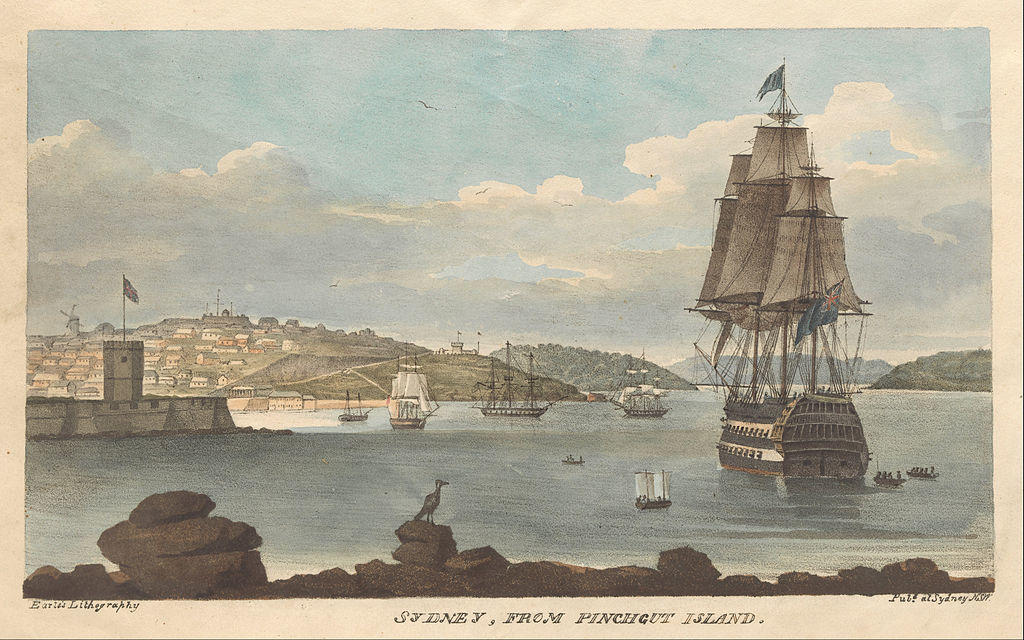
His talents and involvement in the community had earned him the reputation ‘the favourite artist of Australia’ according to the press. Earle travelled to many places in the new continent and depicted Aboriginal people in some of his works, which has been a very important historical record of the time. However, he was unable to purchase land, so he eventually packed up and attempted to continue on travelling by joining Charles Darwin on his voyage on the HMS Beagle. Unfortunately, his health was too poor and he had to abandon the endeavour, instead going back home to London.
Conrad Martens (1801-1878)
Martens voyaged to New Zealand and then Sydney in 1835. An accomplished watercolor, oil, and sketch artist by that time, he loved painting landscapes the most. Previously, he had even been on a voyage with Charles Darwin as a topographical artist (he replaced Augustus Earle, since Earle had to leave due to illness).
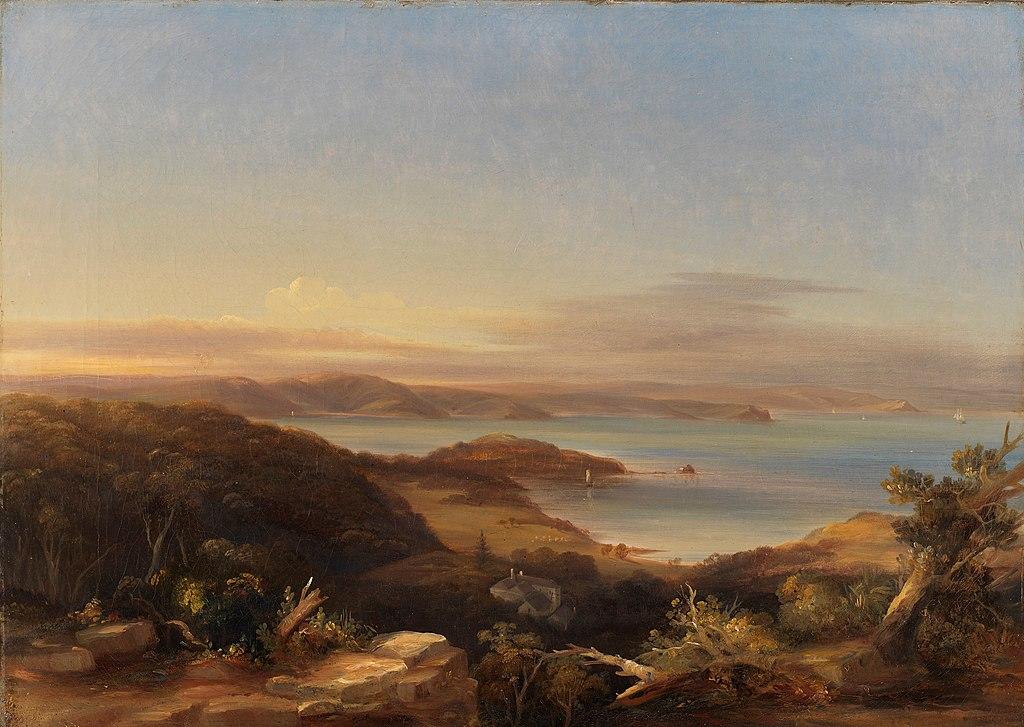
In Sydney, he focused on documenting the growth of the colony by depicting both settlements and wilderness in his paintings. He made a living by fulfilling commissions to paint homesteads and was a sought-after artist. His style of art gave a romantic view to the landscapes. In his life, he was made the Assistant Parliamentary Librarian and in 1878, at his death, he was 'the acknowledged father of colonial art in Australia.’
Louis Buvelot (1814–1888)
Buvelot was a well-traveled man hailing from Switzerland who had previously lived in Brazil for 17 years. He loved warmer climates, so naturally, leaving the cold Swiss environment for the warmth of Australia was an easy decision for him and his wife.
While in Brazil, he had been inducted into the Order of the Rose by Emperor Dom Pedro II for his excellent paintings. In Australia, he continued creating high-quality works depicting rural landscapes. His unique spin on the oft-painted landscapes was that he showed them in a more realistic way, rather than the romanticised versions that made the land seem supremely exotic and magical. Buvelot’s style is seen as the beginning of Australian Impressionism and influenced the Heidelberg School.
Robert Dowling (1827–1886)
Dowling is notable for being the first Australian-born professional artist. He was known for his portraits and genre paintings, especially his depictions of Indigenous peoples, which were meant to convey dignity and truth (but were often influenced by Eurocentric views of the time).
Even after moving to England, Dowling continued to explore Australian identity in his art.
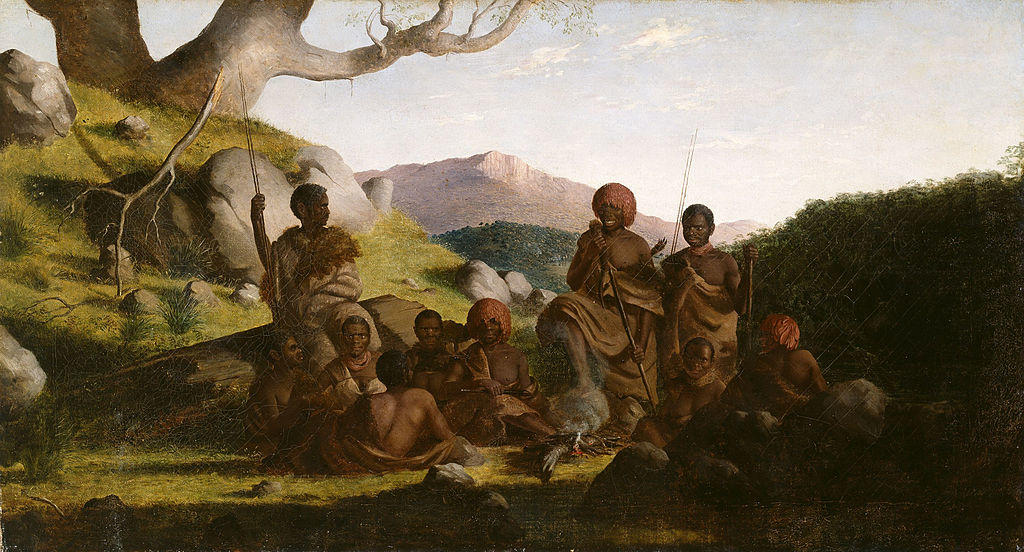
Caroline Louisa Waring Atkinson (Louisa) (1834 – 1872)
After learning how to draw plants and animals from a young age from her mother, Louisa began writing novels along with a naturalist column in the Sydney Morning Herald that often featured some of her sketches.
Her botanical drawings were hailed by other botanist experts at the time, such as BaronVon Mueller, the botanist for the Victorian Government, and British botanist George Bentham.
For her efforts, she had several plants named after her and was acknowledged 116 times in Bentham’s Flora Australiensis.
Atkinson’s detailed images helped scientists learn more about the flora in Australia, marking immense progress in the scientific understanding of Australia’s ecosystem.
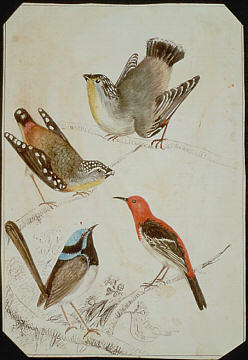
The colonial art created by settlers in the early days shows their attempts to understand and document the new land as well as what life was like there. Unfortunately, much of the art also showed how the colonists aimed to control the landscape and even the people there.
While the art helped settlers become more emboldened to take over the land, it also serves as a detailed visual history of what colonist minds were thinking and feeling about their surroundings at the time. Much of the art also served the higher purpose of understanding more about the natural world and educating people around the globe about the incredible plants and animals found in New South Wales and beyond.
These early artworks helped set the scene for future Australian artists and beyond.

